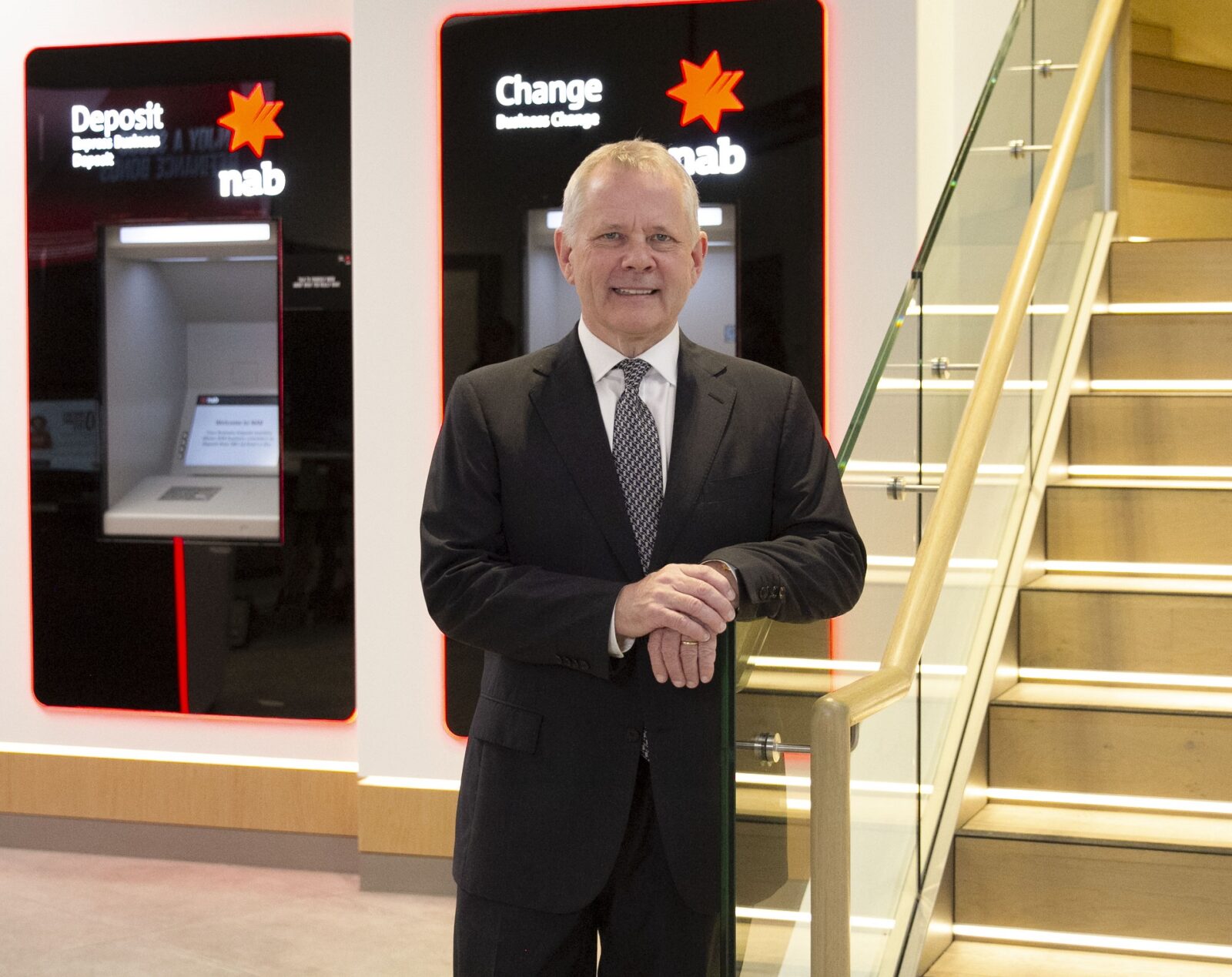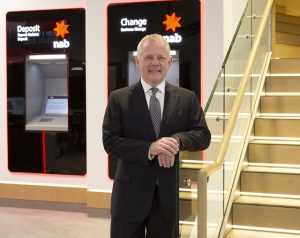Thank you and good morning. It is good to be joining you here, in person, at the Australian Institute of Company Directors 2021 Summit.
I would like to begin by acknowledging the Traditional Owners of the land upon which we have come together today – the Gadigal People, their elders, past, present and emerging. I would also like to acknowledge any Aboriginal or Torres Strait Islander people here today.
I was last presenting in this building in December 2019 for the National Australia Bank Annual General Meeting. On that day, there were twice as many people in the room and the term “socially distanced” was not part of our everyday vernacular.
In the 15 months since, we have all seen and felt the devastation COVID has had on the lives of many Australians and their families. Our conversation this morning is forward-looking, but I do want to start with a few short facts to outline how Australia is emerging from COVID, from a global perspective.
There have been nearly 29,000 COVID cases in this country and tragically, 909 Australians have died. It has been a very difficult time, not just for those who have lost family members, but also for those who lost their livelihood. In just one month – between March and April last year – almost 600,000 people lost their jobs.
In other parts of the world, the health and economic impacts have been much more severe, including nearly 2.5 million deaths globally.
One fifth of those deaths were in the United States, where GDP contracted 3.5 per cent during 2020, the biggest contraction since 1946. In the UK, headline GDP fell 9.9 per cent, more than twice the fall in 2009 at the height of the GFC.[1]
Thankfully, the situation is improving, and Australia has already re-entered a growth phase that will return the economy to pre-virus GDP levels by the middle of this year.
Despite the challenges we’ve all faced in the last year, most Australians agree we are indeed a fortunate country. New NAB research has found that 94% of us believe Australia is a great place to live – up from 88% in 2020. That trend was evident in all states and territories and all age groups.
We are not in this position by luck. Rather, through the coming together of government, business and community with a shared objective to get Australia and Australians through the pandemic in the best possible shape. Fast and effective actions taken by governments contained the virus and provided appropriate income support and stimulus to households and businesses.
With support of government and regulators at the peak of the pandemic, Australian banks deferred the principal and interest payments of more than 900,000 loans.
National Australia Bank alone deferred $60 billion in home loans and business loans. That balance is now down to less than $2 billion (a more than 95 percent reduction), as more customers return to normal payments.
Although some uncertainty remains, with the virus largely contained and the national vaccine rollout begun – it is time to look ahead and consider Australia’s post-COVID future.
Some sectors will not return to pre COVID activity levels any time soon and will need support to reposition (for example Tourism, Aviation and Education). Unemployment is expected to steadily decline to 5.4 per cent by the end of next year. This is still too high and won’t create upward pressure on real wages, a key driver of consumption growth, until we get down to 4.5 per cent.
We cannot rely on a consumption-led recovery in the long-term, through an indefinite federal deficit. A sustained economic recovery in Australia will only be achieved through business investment job creation and productivity improvement.
Despite business confidence having returned to pre-COVID levels, business investment in Australia remains subdued. This was an issue before the pandemic and remains our challenge today.
It is the role of Boards to recognise the new world in which businesses are operating. It is our responsibility to guide them through the risks and find the opportunities in front of us.
Our shared challenge is to navigate our organisations through some of the most drastic social, technological and geopolitical shifts of our lifetime.
In the space of a year, we have seen rapid transformations occur; migrations to digital, new ways of working and new ways of delivering services. These trends might otherwise have taken several years to achieve.
To navigate the risks and embrace the opportunities, we are going to have to challenge ourselves in ways that we haven’t during the past thirty years of uninterrupted growth we’ve lived through.
As a hack cyclist, I’m going to use a cycling analogy to explain how the bar is being set by organisations such as Cochlear, CSL, Atlassian, Canva and Visy– to name a few.
These Australian companies chose to innovate and break away from the pack, rather than sit in the peloton, where progress is achieved through an easier and safer ride but where stand out performance is impossible.
They chose not to ride the slipstream of an Australian economy, which propelled forward uninterrupted for 25 years. They saw opportunities, took risks and ultimately became global leaders.
It’s time for more companies to break from the pack. Australia can capitalise on its post-COVID advantages. But only if we quickly reposition our businesses and chase the next era of economic growth.
It will require Boards to be more demanding of management on business performance, to challenge constraints to their thinking.
It will require banks to help business adapt and lend support to customers in their ambitions, a commitment which is core to National Australia Bank – as Australia’s largest business bank. This will be a business-led recovery and we stand ready to play our role.
And it will require a constructive dialogue between business and all levels of government, on how we can contribute to a stronger future.
Five key features of a modern economy that I and my fellow panellists, Christine McLoughlin and Peter Hay, would like to explore today are:
- A cohesive and consistent approach to issues of national significance. This was evident in the initial pandemic response and more recently in designing a national plan for vaccine rollout, which we can expect to be fast and effective in building herd-immunity and reducing harm where infections do occur. This will be the critical trigger for policy change and certainty on domestic and international borders in coming months.
- A more efficient and internationally competitive tax and regulatory system. Planned changes to federal tax rates will deliver benefit in coming years but holistic tax reform is needed, including changes to state-based taxes. Recent efforts by government to digitise business records and ID tools are also a welcome move that will lower costs and reduce complexity; but more can be done to have a more consistent national approach to licensing and accreditation, for example.
- A destination for international businesses investment and skilled migration We now have a reputation as one of the cleanest, safest places in the world to live and work. The Government’s early-stage work on bringing manufacturing, financial services and health sector skills into Australia will help bring the investment and people to Australia that help create new jobs.
- Diversified industrial sectors. We saw the risks of overly concentrated international supply-chains when COVID hit and the movement of people and goods across borders was interrupted. We need to invest in the critical advanced manufacturing, medical technologies, food and mining/energy production – and keep strategic reserves of critical supplies we can’t make onshore. Also, look to our own market diversification as well.
- A transition to Australia to a low-carbon economy. The need for climate action is a persistent issue and more businesses are making risk-based, commercial decisions to prepare for the inevitable net zero emissions world. National Australia Bank’s commitment is to achieve a net zero emissions lending portfolio by 2050 in line with the Paris commitments. As a relationship-led bank, we are committed to supporting business customers, across all sectors, to transition and secure their long-term sustainability.
We look forward to discussing these important topics. Thank you again to Helen and the AICD for the opportunity to contribute today.
[1] UK Office of National Statistics.






